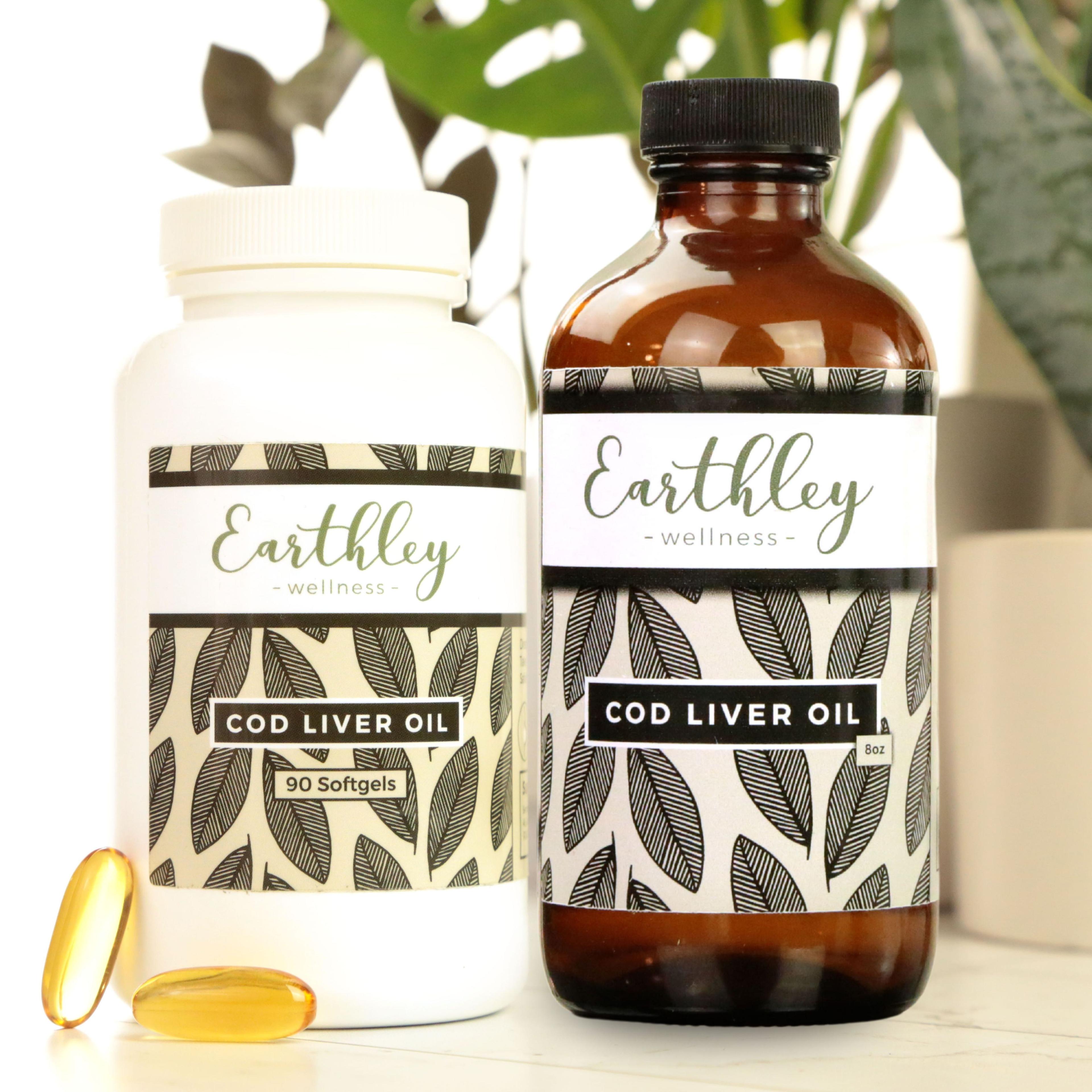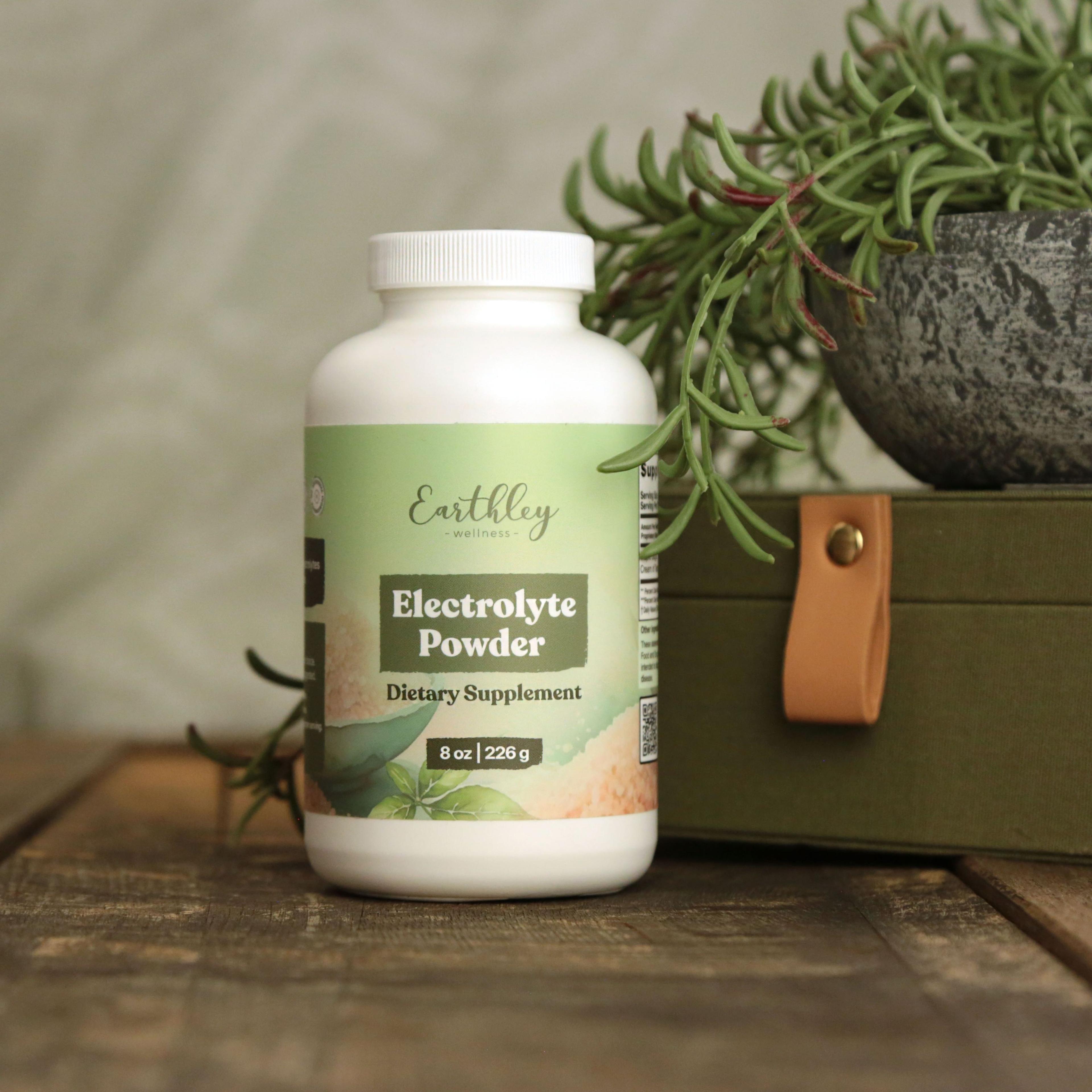How to Support GLP-1 Levels Naturally
Keep hearing about GLP-1?
From prescription ads to social media testimonials, it’s become one of the biggest wellness buzzwords around. But behind all the hype, there’s a simple truth: GLP-1 isn’t new, and it isn’t synthetic. It’s a natural hormone your body already makes.
GLP-1 plays an important role in how we digest food, balance blood sugar, and feel satisfied after eating. When it’s working as it should, we feel steady, clear, and nourished. When it’s out of balance, we might experience cravings, fatigue, or that constant “I’m still hungry” feeling.
In this blog, we’ll unpack what GLP-1 is and how it works in the body, explore what can cause it to run low, and share natural, time-tested ways to support it through real food, healthy habits, and herbs that bring your system back into rhythm.
GLP-1 101/The 411 on GLP-1
GLP-1, Glucagon-like Peptide -1, is a naturally occurring hormone made by enteroendocrine L-cells, hormone-producing cells in the lining of the ileum and colon (end of the small intestine and beginning of the large intestine). L-cells have microvilli, finger-like protrusions, that extend into the open space of the intestine[1].
When the microvilli come in contact with amino acids, long and short chain fatty acids, glucose and other stimuli, such as bile acids, acetylcholine, or signals created when the intestine stretches, they release GLP-1, along with other hormones, into the bloodstream[2]. This release of hormones is known as incretin.
GLP-1, alongside PYY (Peptide YY), increases satiety levels. GLP-1 stimulates the release of glucose-dependent insulin secretions, slows the movements of the intestinal tract, as well as the emptying of the stomach[3].
The half-life of GLP-1 is short. After a minute or two, it is degraded by an enzyme known as DPP-4 (dipeptidyl peptidase-4). Once inactivated, insulin secretions stop, and glucagon, the hormone responsible for increasing blood sugar levels, is also suppressed[3]. This is why our daily habits matter.
What Contributes to GLP-1 Running Low
Due to the nature of the nutrients, chemicals, and movements that stimulate the L-cells to release GLP-1, it’s no surprise that certain lifestyle, dietary, and metabolic patterns play a role in its secretion or how effective the signaling is.
Meals that are highly processed, full of added sugars, and low in fiber impair the post-meal release of GLP-1[4]. They are digested fast enough that the microvilli are rarely stimulated. This means that more food tends to be consumed before satiety signals are sent.
Studies have shown that a lack of physical activity is linked to a reduction in incretin sensitivity. This is especially true if we continue to sit after eating a meal.
Extra weight and insulin resistance reduce GLP-1 secretion as well as beta cell (insulin-secreting cells in the pancreas) responsiveness. This is due to an increase in activity of DDP-4, the enzyme responsible for inactivating GLP-1[5].
When chronic inflammation is present, especially in the gut, we often see a reduction in appetite and a change in bowel movements. These may be associated with a major increase in GLP-1, since satiety and slower motility are what it triggers. DDP-4 is reduced, allowing GLP-1 to remain in the plasma longer[6].
GLP-1 signaling can get lost in the noise of inflammation, because L-cells are both hormone and immune-releasing cells. Lost signals may lead to an increase in GLP-1, which inadvertently perpetuates the inflammation cycle [6].
Chronic stress decreases GLP-1 stimulation in the brainstem, which may play a part in stress eating and metabolism dysregulation [7].
Poor sleep delays the post-meal peak of GLP-1, causing a disruption in its circadian rhythm, and impairs glucose metabolism and insulin sensitivity [7].
Foods that Support GLP-1 Production
So, now that we know what causes problems with GLP-1, what can we do to silence the noise and get it functioning well again?
Let’s take a look at food and how not only what we eat, but the order in which we eat it, plays a part in how effective GLP-1 can be.
Prebiotics
Prebiotics come from fibers that are broken down and fermented by the bacteria in our gut to create short-chain fatty acids (SCFAs). Butyrate is one such short-chain fatty acid. SCFAs stimulate the L-cells and release GLP-1[8]. Fermentable fiberous foods include: artichokes, asparagus, onions, apples, green bananas, oats, barley, lentils, beans, and sunchokes.
Probiotics
Supporting a healthy gut microbiome plays a big part in proper GLP-1 signaling. These include supplemental probiotics such as bifidobacterium and lactobacillus. Kimchi, sauerkraut, and kefir would also fall into this category.
Proteins
There are several proteins that stimulate GLP-1 secretion. They include whey, casein, fish, and egg whites. Specific amino acids (protein’s building blocks) like leucine, isoleucine, and arginine also support GLP-1.
Polyphenols
Polyphenols are plant compounds that have antioxidant and anti-inflammatory properties to them. This large group includes foods like: berries, 85% dark chocolate or higher, green tea, coffee, and cruciferous vegetables (e.g. broccoli, Brussels sprouts, kale, etc.) Supplemental polyphenols may include: resveratrol, EGCG, and luteolin.
Healthy Fats
There is such a thing as healthy fat, and we need it for more than a means to stimulate GLP-1. Our healthy fats provide us with long-chain fatty acids (LCFAs), which support mood, cognitive function and development, cardiovascular health, and reduced inflammation[7]. We receive these benefits from mono- and polyunsaturated fats. These are found in fatty fish (salmon), olive oil, avocados, raw nuts and seeds.
Carbohydrates
While there wasn’t much on how carbohydrates contribute to GLP-1 secretion, our bodies, especially our brains, still need these sugars. The more complex they are, the better so they don’t spike our need for insulin so high. These come from all the whole foods that we eat.
Eating Timing, Sequence, and Pace
Now that we have the right foods to support GLP-1, let’s talk about the timing, sequence, and pace that may help us get the most out of this amazing hormone [7].
Timing
Just like our sleep, GLP-1 has a circadian rhythm. We can tap into the rhythm by eating during daylight hours, altering calorie distribution across the day, and eating regularly. Intermittent fasting may be a way to help shift our eating schedule to better match the rhythm.
Sequence
As for the best order to eat our food, it is best to start with our protein, with or without the healthy fat, and our non-starchy or fiber-rich vegetables. Carbohydrates are to be eaten last.
Pace
Finally, how we consume our food plays a role as well. Learning to adopt a mindful practice while eating allows us to take smaller bites, chew more slowly and more times before swallowing. For those of us that rely on timing, each meal is meant to take about half an hour.
These three practices combined help keep our post-meal blood sugar down and boost satiety because stomach emptying slows down.
With our eating back on the right track, let’s look at other lifestyle factors that can support our GLP-1 production.
Lifestyle Supports for GLP-1 Production
Post-Meal Walk and Regular Exercise
We’ve just finished a wonderful meal, and we may move a short distance before sitting again. However, this actually might be less helpful to our digestion than we think. Several studies show that 30-45 minutes of low-intensity walking after a meal stimulates GI motility and improves nutrient delivery [9,10]. If 30-45 minutes isn’t feasible, start with 10-15 minutes. Even a little bit helps more than not doing it at all.
Performing aerobic or resistance training exercises 3x a week can also support good gut motility [7].
Sleep and Stress Management
The quality of our sleep matters, because it affects so many things. Especially our stress levels. 7-9 hours of sleep is recommended [7].
Other stress reduction techniques that may be helpful include: yoga, meditation, and deep breathing [7].
Hydration
Proper hydration is key, especially when it comes to our metabolism and prevents a decrease in GLP-1 production. The best rule of thumb is to drink 1 ounce for every 2 pounds of body weight. So, if we weighed 150 pounds, we’d need to drink 75 ounces of water [7].
Non-concentrated juices and teas can count toward your water consumption. Juices made from concentrate, and drinks high in caffeine may count against your water consumption due to the body needing to use more water to process it.
Herbs that support GLP-1 Production
We will get the most benefit for GLP-1 production through our lifestyle changes, but that doesn’t mean that we can’t include herbs that will be additive to the process.
Bitter Herbs
Going back to digestion, bitter herbs like gentian, yarrow, fenugreek, Oregon grape, orange peel, hops, fennel, and dandelion are best taken before a meal is consumed. All of these herbs support a beneficial increase in stomach acid, so it is strong enough to process the foods we consume [11]. Pairing them with pungent/spicy herbs like ginger and cinnamon helps make them more palatable. You can find many of these herbs in our Digest Support.
Polyphenols
If we feel we aren’t getting enough of these from the colorful foods we eat, it’s easy to add more with a scoop of our Super Foods Powder.
Berberine
This plant alkaloid is found in plants like Oregon grape and European or Indian Barberry. It has been shown to increase GLP-1 secretion and improve insulin sensitivity[12]. For a deeper dive into berberine, check out our Benefits of Berberine blog coming soon!
Other
Other GLP-1 and lifestyle supporting supplements may include:
- Cod Liver Oil to boost healthy fat intake
- Flax or Chia Seeds for increased fiber
- Sleepy Time Herbal Extract to support better quality sleep
- Electrolyte Powder for improved hydration
With the help of supportive foods, mindful eating, movement, and a few trusted herbs, you’re giving your body the cues it needs to regulate GLP-1 naturally. These suggestions aren’t about grabbing hold of the next quick fix; they’re about restoring communication between your gut, brain, and hormones so your body can do what it was designed to do.
At the end of the day, GLP-1 isn’t something we have to chase. It’s something our bodies already know how to produce and regulate. When we return to real nourishment, quality rest, and steady rhythms, we create an environment that allows that natural intelligence to thrive.
True wellness doesn’t come from forcing our bodies to perform. It comes from supporting them. Every mindful meal, deep breath, and night of good sleep is a message of trust to your body, reminding yourself that balance is possible.
Your body already has the blueprint for health. Sometimes, it just needs a little support to remember.
Check out these products!

Bitters to promote healthy digestion

Promotes energy, gut health, and immunity with the nourishing power of plants

A rich natural source of vitamins A and D and omega-3 fatty acids that support immune, brain, and gut health

To promote calm mood and restful sleep

To hydrate with natural electrolytes during endurance or illness


Supports digestive health and helps maintain a balanced microbial environment. Supports oral hygiene.

For inflammation
Resources: [1] Kuhre, R. E., Deacon, C. F., Holst, J. J., & Petersen, N. (2021). What Is an L-Cell and How Do We Study the Secretory Mechanisms of the L-Cell?. Frontiers in endocrinology, 12, 694284. https://doi.org/10.3389/fendo.2021.694284 [2] Spreckley, E., & Murphy, K. G. (2015). The L-Cell in Nutritional Sensing and the Regulation of Appetite. Frontiers in nutrition, 2, 23. https://doi.org/10.3389/fnut.2015.00023 [3] Drucker D. J. (2024). The GLP-1 journey: from discovery science to therapeutic impact. The Journal of clinical investigation, 134(2), e175634. https://doi.org/10.1172/JCI175634 [4] Huber, H., Schieren, A., Holst, J. J., & Simon, M. C. (2024). Dietary impact on fasting and stimulated GLP-1 secretion in different metabolic conditions - a narrative review. The American journal of clinical nutrition, 119(3), 599–627. https://doi.org/10.1016/j.ajcnut.2024.01.007 [5] Deacon, C. F. (2019). Physiology and pharmacology of DPP-4 in glucose homeostasis and the treatment of type 2 diabetes. Frontiers in Endocrinology, 10, 80. https://doi.org/10.3389/fendo.2019.00080 [6] Zietek, T., & Rath, E. (2016). Inflammation Meets Metabolic Disease: Gut Feeling Mediated by GLP-1. Frontiers in immunology, 7, 154. https://doi.org/10.3389/fimmu.2016.00154 [7] Pumper, C. (2025, July 1). How to activate GLP-1 naturally. Ohio State Health & Discovery. https://health.osu.edu/wellness/exercise-and-nutrition/activiating-glp-1-naturally [8] Keegan, S. (2024, December 16). Foods that can increase GLP1 hormone. Healthy For Life Meals. https://www.healthyforlifemeals.com/blog/foods-that-can-increase-glp-1-hormone [9] Bellini, A., Nicolò, A., Bazzucchi, I., & Sacchetti, M. (2022). The Effects of Postprandial Walking on the Glucose Response after Meals with Different Characteristics. Nutrients, 14(5), 1080. https://doi.org/10.3390/nu14051080 [10] Engeroff, T., Groneberg, D.A. & Wilke, J. After Dinner Rest a While, After Supper Walk a Mile? A Systematic Review with Meta-analysis on the Acute Postprandial Glycemic Response to Exercise Before and After Meal Ingestion in Healthy Subjects and Patients with Impaired Glucose Tolerance. Sports Med 53, 849–869 (2023). https://doi.org/10.1007/s40279-022-01808-7 [11] Xie, C., Wang, X., Young, R. L., Horowitz, M., Rayner, C. K., & Wu, T. (2018). Role of intestinal bitter sensing in enteroendocrine hormone secretion and metabolic control. Frontiers in Endocrinology, 9, Article 576. https://doi.org/10.3389/fendo.2018.00576 [12] Xu, M., Xiao, Y., Yin, J., Hou, W., Yu, X., Shen, L., Liu, F., Wei, L., & Jia, W. (2014). Berberine promotes glucose consumption independently of AMP-activated protein kinase activation. PLoS ONE, 9(7), e103702. https://doi.org/10.1371/journal.pone.0103702